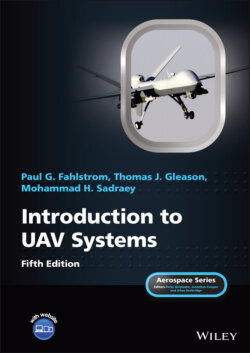Читать книгу Introduction to UAV Systems - Mohammad H. Sadraey - Страница 33
1.4.1 Aquila Mission and Requirements
ОглавлениеThe Aquila system was designed to acquire targets and combat information in real time, beyond the line‐of‐sight of supported ground forces. During any single mission, the Aquila was capable of performing airborne target acquisition and location, laser designation for precision‐guided munitions (PGM), target damage assessment, and battlefield reconnaissance (day or night). This is quite an elaborate requirement.
To accomplish this, an Aquila battery needed 95 men, 25 five‐ton trucks, 9 smaller trucks, and a number of trailers and other equipment, requiring several C‐5 sorties for deployment by air. All of this allowed operation and control of 13 air vehicles. The operational concept utilized a central launch and recovery section (CLRS) where launch, recovery, and maintenance were conducted. The air vehicle was flown toward the Forward Line of Own Troops (FLOT), and handed off to a forward control section (FCS), consisting mainly of a ground control station, from which combat operations were conducted.
It was planned that eventually the ground control station with the FCS would be miniaturized and be transported by a High Mobility Multipurpose Wheeled Vehicle (HMMWV) to provide more mobility and to reduce target size when operating close to the FLOT. The Aquila battery belonged to an Army Corps. The CLRS was attached to Division Artillery because the battery supported a division. The FCS was attached to a maneuver brigade.
